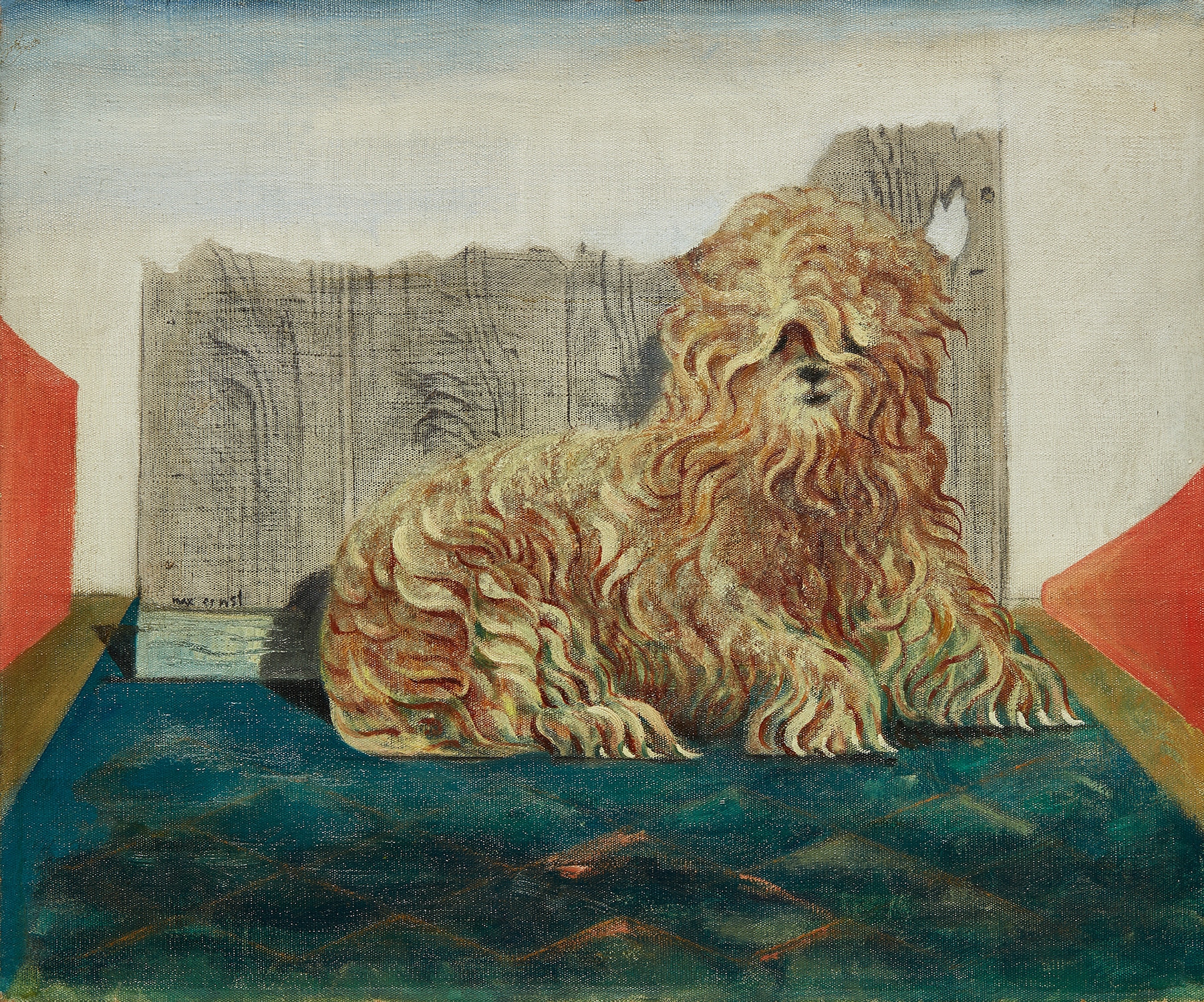

Maximiliana: Max Ernst from the Collection of Peter Schamoni
45
Max Ernst
Kachina, le chien de Peggy Guggenheim
signed "max ernst" center left
oil on canvas
18 1/8 x 21 5/8 in. (46 x 54.9 cm)
Painted circa 1942.
Dr. Jürgen Pech has confirmed the authenticity of this work, which will be included in the supplementary volume of the complete work of Max Ernst now in preparation, edited by Prof. Dr. Werner Spies in collaboration with Dr. Jürgen Pech and Dr. Sigrid Metken.
Dr. Jürgen Pech has confirmed the authenticity of this work, which will be included in the supplementary volume of the complete work of Max Ernst now in preparation, edited by Prof. Dr. Werner Spies in collaboration with Dr. Jürgen Pech and Dr. Sigrid Metken.